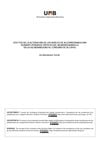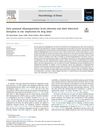Perceived Predation Risk Predicts Glucocorticoid Hormones, But Not Reproductive Success in a Colonial Rodent
May 2022
in “
Hormones and behavior
”
TLDR Prairie dogs with fewer neighbors are more stressed but their number of babies isn't affected.
The study investigated the Cort-Adaptation hypothesis in a wild population of black-tailed prairie dogs, focusing on the effects of predation risk and reproductive effort on glucocorticoid (GC) hormone levels. The researchers found that prairie dogs living near fewer conspecifics (members of the same species) spent more time being vigilant, indicating a higher perceived predation risk. These prairie dogs also had higher GC production. During the reproductive season, lactating females had higher GC levels than non-lactating females. Interestingly, despite elevated GC levels due to predation risk, there was no effect on annual reproductive success. However, female prairie dogs with increased GC levels during the reproductive season had higher annual reproductive success than those with lower levels, providing strong support for the Cort-Adaptation hypothesis.


